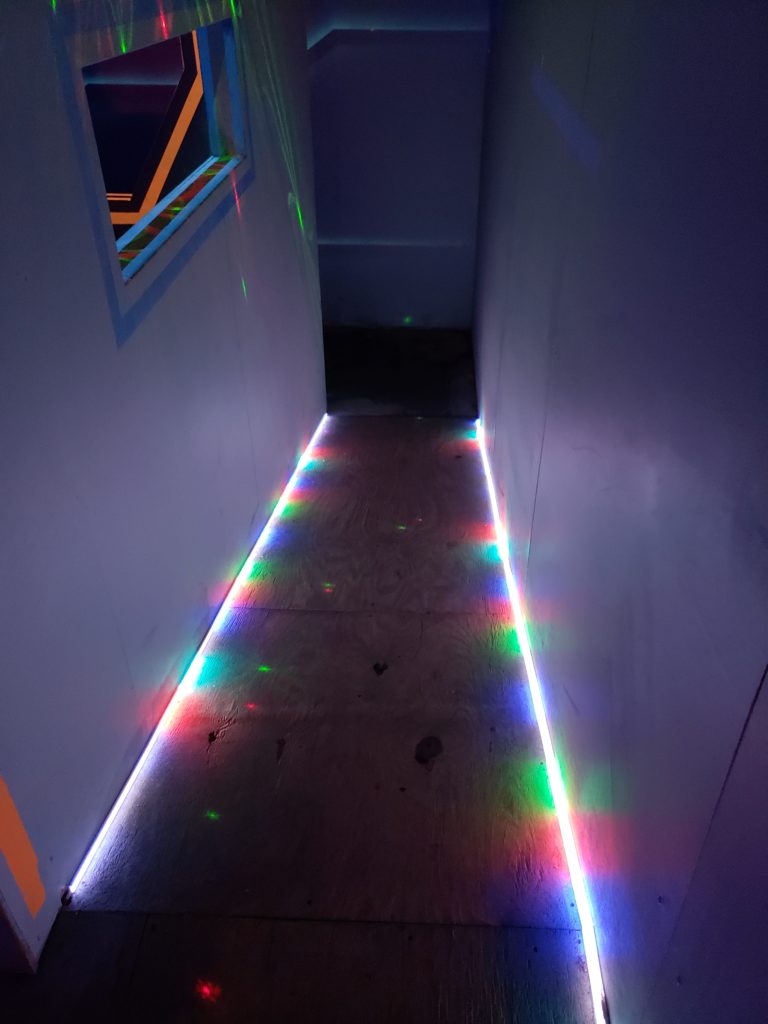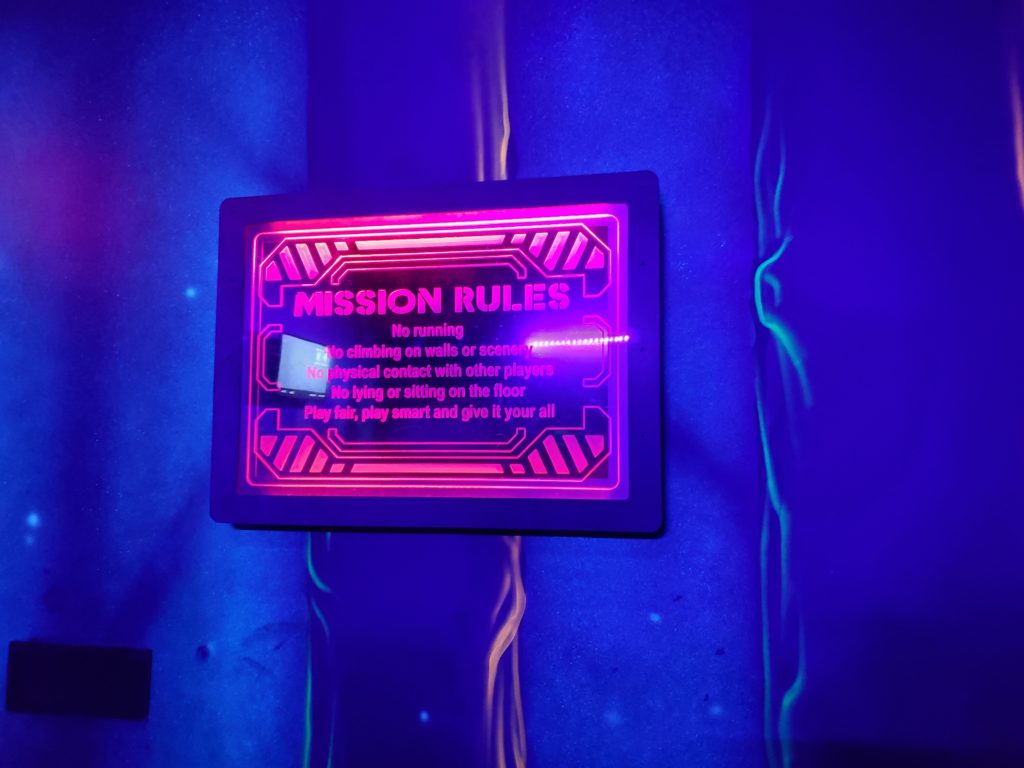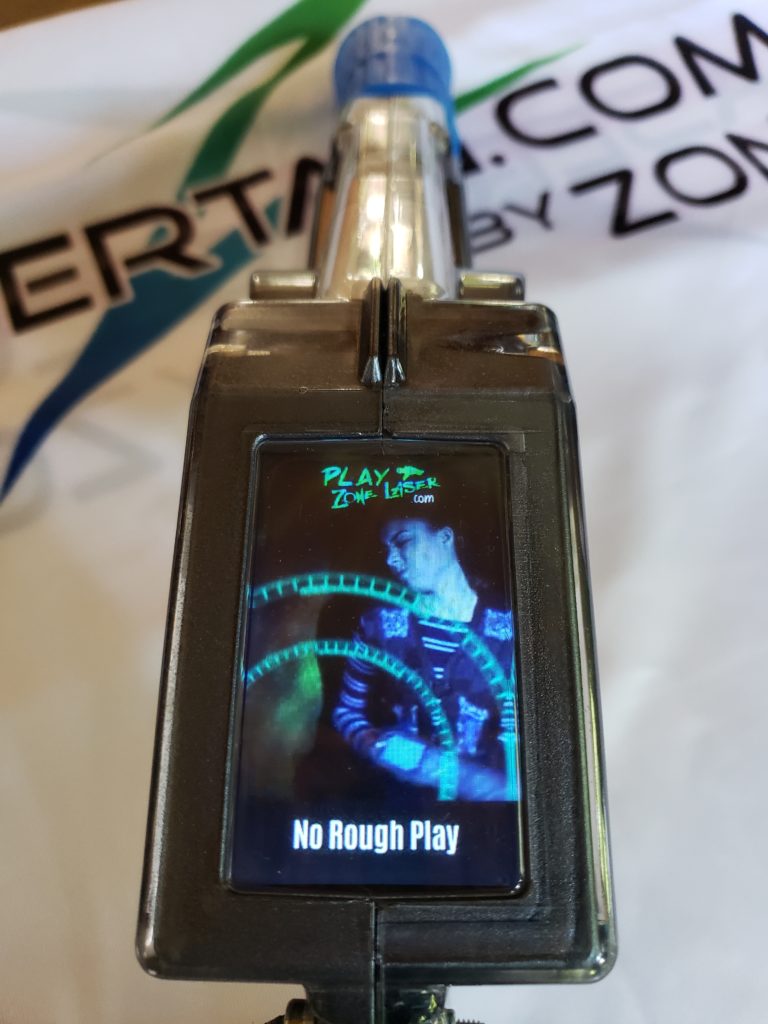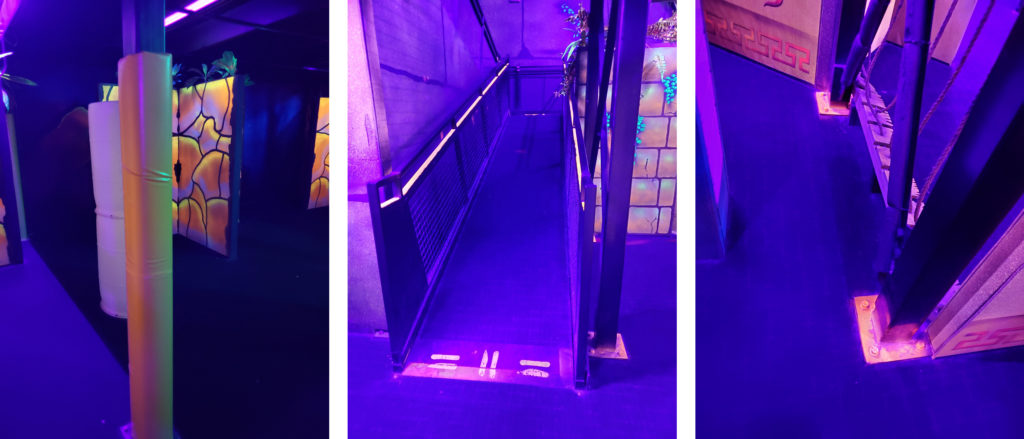Laser Tag Safety
Key Considerations to Ensure Your Players Have a Safe & Fun Experience
I heard them before I saw them. It was a busy “All You Can Play” Saturday night at our Toledo, Ohio, Q-Zar laser tag facility. And even though it was a packed and noisy house, you couldn’t miss the wail of the sirens as they approached. Moments later, there was the indelible vision of paramedics rushing in to attend to our teenage guest who’d gotten injured while playing.
Thankfully, we have a process for dealing with injuries and our crew followed it. The staff immediately stopped the game and got all the other players out. One of the employees had the idea to get an office chair and since the youngster was able to sit in it, he was wheeled out to the lobby to wait for the EMTs. His parents were there and when asked what happened, he told them that he’d gone around a corner, twisted his foot and popped his knee out. The EMTs told him they’d take him to the hospital where a doctor would likely pop it back in. Thankfully, the teenager was okay and it wasn’t anything about our arena that caused his injury.
I’m proud of how my team handled the situation and also that it was the only accident we’ve had in over 5-1/2 years. This safety record isn’t by accident either. (See what I did there?) It’s completely by design in how our arena is constructed, lit and operated. As I go through some major safety points, you’ll see ways to positively affect the safety of your laser tag center.
Lighting
There was a time when darkness, dinginess and splattered paint ruled the day, but thankfully, that’s not the trend today. Our Q-Zar Toledo is nicely lit and I’m happy to say we won Tiviachick’s 2020 Most Visually Stimulating Laser Tag Arena Award. (Tiviachick is Laurie Jean Britton, a laser tag blogger, who has visited hundreds of arenas covering all 50 states.)

One of the early innovators in arena lighting was Lasertron’s Jim Kessler. He was the first to use LED lights. Today, some arenas have LED panels and many have DMX lighting packages, which work with pretty much every manufacturer’s equipment now. Our Q-Zar Toledo is the most DMX’d laser tag arena in the country.
Safety-wise, a brighter arena is a safer arena. It’s that simple. Now, of course, we can’t just turn on the white lights for “the ultimate in safety” because that would take away a lot of the fun. But, I do think part of our great safety record is due to the lighting.
A key place where it directly affects safety is near the ramps and, honestly, I stole a fantastic idea from a dear friend, Ben Janssen of The Zone Family Entertainment Complex in Bendigo, Australia (with his blessing, of course). He added DMX lights at the bottom of his Laser Zone arena ramps and along the edge where the floor and wall come together. This boosted safety because the players could more easily see the ramps in the darkness of the arena, and it also enhanced play because the DMX lighting reacted to game events.
At the time Ben did this, American centers’ ramps were relatively dark, covered in gray or black carpet or painted some sort of gray with slip-resistant material, like sand, mixed into the paint. Here was this one guy on the other side of the world that had come up with the idea to install this LED light trim and tie it into DMX. I loved the idea so much that on my next trip to Australia, I made the trek to Bendigo to see it firsthand. It was amazing and one of the best facilities I’ve ever seen.
Daily Inspections
Each day when we open, we run a test game and walk around to inspect the arena. We look for all sorts of things but to give you an example of a safety hazard I saw in another location, the arena builder had repurposed French drainpipes as covers on the corners. The problem was that as the players bumped into the corner, the screws used to hold them in place started to wiggle out, leaving a sharp, metal protrusion players could run into. Walking and inspecting your arena daily gives you the chance to find these concerns before there’s an injury.
At the end of each shift, we turn on the white lights and go through the arena looking for anything that can become a trip or slip hazard. This includes lost cell phones, jewelry and such that can cause a player to step or trip and twist their ankle slightly.
As I’ve said before, it’s even better when you, the laser tag operator, play a game in the arena. It’s only then that you know if everything is working as optimally as it should and that it’s a safe environment.

Case History
You might be starting to think that I’m just a big worrywart, but a key reason my arena is so focused on safety is that I’ve served as an expert witness in lawsuits regarding the safe operation and construction of laser tag environments.
One case I testified in involved an elderly couple in their late 70s who were kind of barrel-rolled by a fairly stocky 40-year-old adult. He had been kneeling then stood up and proceeded in motion at the same time, rounding a barrel and slamming into the couple. The wife ended up with a broken hip, the husband with a broken arm, and over a million dollars in medical bills.

The opposing counsel had a lot of questions: Were the barrels and pylons adequately lit? Were they adequately spaced apart? Could you see from one side of the arena to the other? Could you see around the barrels? Should people over the age of 70 be playing laser tag?
The case hinged on the safety signage in the facility and whether or not the staff member played the pre-game safety video. The injured couple claimed no safety video was played and the staff member did not orally cover safety for them or to them. The facility couldn’t prove that they had done either. Also, there were no witness statements from the accident other than the couple and the laser tag staff member. No one had thought to gather the names, contact information and statements from anyone else who had been in the arena playing.
This location was no different than any even today. We provide safety training but players can say we didn’t. It’s the classic “their word vs. ours” scenario.
At our sister facilities in Europe, they put employees through safety training about how to play the briefing video, where the off and on buttons are, where fire extinguishers are located and such. Each person is tested and the results and a safety certificate are put in the employee’s file. When an inquiry or an inquest takes place, they’re able to show that that staff member had been properly trained on safety. They take this part of safety far more seriously than we do in the U.S.
Having learned this –– and seeing how much money gets spent on lawyers –– I went back to Zone’s engineers and a few months later, we introduced a phaser-based safety video on the Helios laser tag equipment. Today, both Helios 2 and Helios PRO has a safety video that plays on each phaser before the pack can be used in the game. We also have a database that writes the time the safety video played, the number of phasers active in the game and the number upon which the safety video played. There’s even more we can do in this area and our team is on it.

Arena Design
Rand Wright of Safe Park USA and I were in Phoenix last summer and visited laser tag and fun centers, walking around and noticing how many safety violations we saw.
In laser tag arenas, ramp elevation changes are a big area of concern and we noticed a number of them weren’t marked with an indication of any kind…no lighting, no arrows, no fluorescent orange paint, no black and yellow safety tape, nothing. Typically, it was just the black carpet running straight up off the arena floor and right onto the ramp. Why is this important? Because if players can’t see the ramps, they’re more likely to trip and fall.
We also saw handrails that weren’t illuminated properly or brightly painted. When those are dark, players can smash their hands on them.
If you have a ramp near a switchback, it’s a good idea to put some sort of padded material on the wall (something similar to a wrestling mat from gym class). We’ve seen kids go down the ramp and slam into the wall, risking injury as well as possibly damaging the equipment. Similarly, it’s a good idea to add physical elements (a barrel, for example) that can be painted a fluorescent color to give the players some depth perception in the play space. Designers need to understand that theming is important but can also play into greater safety. Putting theming on these switchback walls can enhance a player’s ability to discern where the walls and level changes are.
Arenas commonly have support poles within the space that are structural, but I can’t count the number of times I’ve seen these left as-is. These should be padded and also brightly painted for visibility.
I’ve also seen metal bolts sticking out from walls and structures right at eye-level for a lot of players. It doesn’t take any time at all to go back and cut these off. Again, walk your arena. Look to see if bases and other props are properly mounted. If your arena has mirrors to bounce the laser beams, do they have a bead of silicone applied around each edge so players can’t touch it and cut themselves?
Fog and haze are atmospheric effects that enhance the play experience, but some location owners use cheaper oil-based foggers that cause the flooring to become slick. Even with the proper water-based foggers, you can develop a leak causing liquid to pool underneath the unit. It’s important to maintain these units and look out for an accumulation of condensate.
State Laws
In some states, anything that’s deemed an “attraction” requires an attendant with regulation falling under their agriculture departments. In short, a lot of this grew out of regulating carnivals and other attractions connected to state fairs. Wanting to not have to reinvent the wheel, a lot of states adopted and borrowed what had been enacted by others. While not all states do, a good number of consultants aren’t aware of this classification and requirement.
If you are in a state that requires this, to protect yourself in case of an injury, you’re not only going to need to be licensed (and likely inspected at certain intervals) but also ensure there’s an attendant in the arena during each game. By the way, having a team member in the arena during each and every game is a great idea even if it’s not mandated.
Legal Aid
If the worst does come to pass and you find yourself dealing with an injury and potential lawsuit, there is help. IALDA, the International Association of Legal Defense for the Amusement Industry (www.ialda.org) has lawyers located throughout the country who specialize in defending the amusement industry in court. They have a strong relationship with the roller-skating association and they’ve also spoken at IAAPA.
Should operators find themselves being served for alleged violation of safety, I think operators should reach out to IALDA instead of (or in addition to) their own, local attorney. The same lawyer who incorporated their company or handled their divorce isn’t the specialist to handle this type of claim. A lot of attorneys simply don’t understand the attractions in the amusement industry.
IALDA does a fantastic job and I think they’re an under-appreciated asset in the amusement industry mostly because people are unaware of them. Do yourself and your business a favor and take a minute after reading this column to look them up and become familiar with what they do.
As for waivers and whether they matter and make a center safer, that’s an entire article unto itself. Suffice it to say that today, children cannot sign their own waivers and, in some states, they’ve ruled that parents don’t have a constitutional right to waive away their child’s rights by signing one.
A creative way around this is to have some sort of player participation or rules acknowledgment form (either on paper or electronic). It’s not a “waiver,” which has significant legal definition, but is an acknowledgment that the player agrees to certain safety standards and rules.
Ultimately, locations should consult IALDA and check with their attorneys to understand the laws in their state and conform to those. After all, I’m not an attorney (and don’t even play one on TV). In other words, “This article is not to be construed as legal advice.” It is simply me relaying what I’ve learned through my many years operating laser tag and by serving as an expert witness.
There are many more aspects to discuss safety for the laser tag industry; we’ll touch upon those in future articles. At the end of the day, laser tag is fun –– really fun –– but with any physical activity, there’s some inherent risk. Safety is an ongoing process. As a center owner or operator, the last thing you ever want to hear is the sound of an approaching siren to attend to an injured guest, even when everything turns out well in the end. An operator has an obligation and a duty to provide the best experience for their guests and that means the safest, too.
Erik Guthrie has nearly 25 years in the laser tag industry serving in many capacities. Starting out as a part-time game marshall in 1993, in 2003 Guthrie became Vice President of Zone Laser Tag, the company recognized as the global leader in laser tag manufacturing. (He says it has 40 percent of the world market.) In addition, he was the Executive Director of the International Laser Tag Association for seven years and is also an owner/investor in several laser tag facilities. Guthrie has been quoted in the Wall Street Journal, Inc. Magazine, Fast Company, as well as numerous trade publications. He serves as the curator of the Laser Tag Museum and was recently featured on the hit television show Storage Wars. He owns and chairs the annual Laser Tag Convention. Guthrie is also involved in the R&D of the laser tag experience now enjoyed by millions of players every month around the world.
